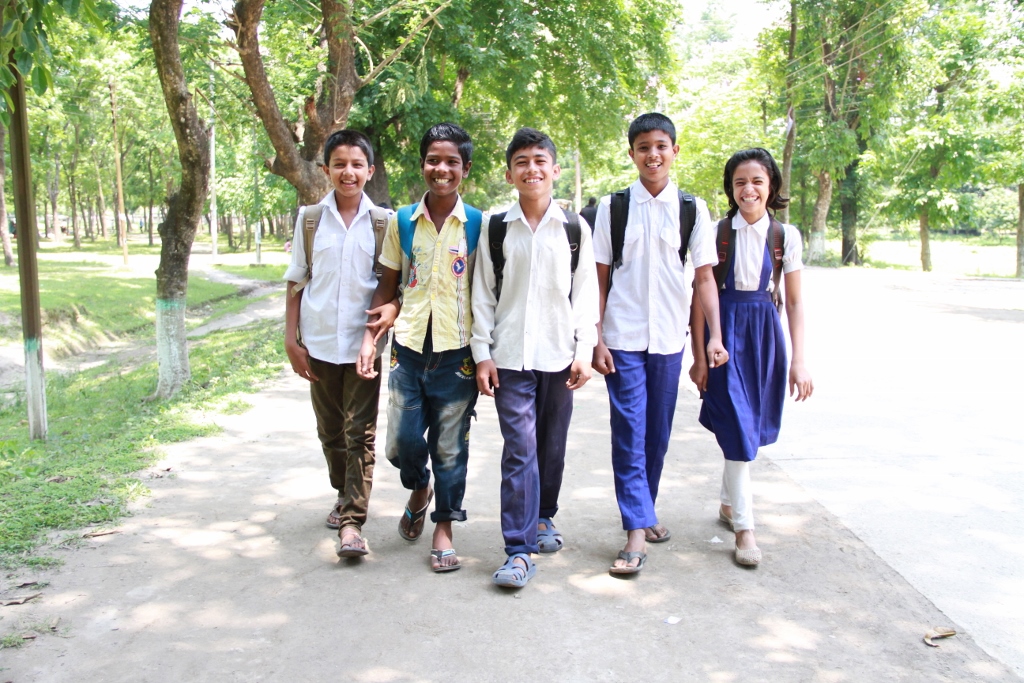By Gloria Das
As he goes to school with his friends, Hemel seems like any other child. But until last year, the 10-year-old led a different life, enduring a daily 16-hour shift at a tea stall in the city of Rangpur in northern Bangladesh.
Hemel’s story begins when financial hardship forced his aging parents to pull him out of school and send him to work. “When I saw my friends going to school and I couldn’t, I felt so sad. I felt like I’d never achieve my dreams in life.”
For about 85 million children around the world, working instead of receiving an education is a reality. This doesn’t just harm a kid’s childhood, but it also harms their future. Even just one extra year of school can raise future earnings by 10% according to UNESCO. But for kids who are at work instead of school, they are deprived of this future opportunity, while sometimes being in dangerous, dirty, and degrading jobs.
To cut the number of children in hazardous work, World Vision’s Notun Jiboner Asha (Hope for New Life) project in Rangpur, Bangladesh, has three main components: a referral system for children who drop out of primary school, primary education centers, and community-based advocate networks.
Members of this project worked with Hemel’s parents to convince them that he should stop working and resume attending school. He joined the World Vision supported Kerbari non-formal education center for child laborers.
Binte Rubaiya, who runs the center, says, “Education, which is essential in ensuring better opportunities for child workers, is a common thread throughout these programs. The challenge is to make schooling economically viable, attractive, and relevant for working children and their families.”
As a student at the center, Hemel, received material support for his education, as well as a plastic savings box to encourage him to put aside money for his studies and family’s expenses.
“Introducing the idea of saving money to school children not only lets them watch their money grow but also teaches them an important life skill—responsibility. Learning this at an early age will literally pay off for the rest of a student’s life,” continues Rubaiya.
Hemel says, “I save so I can have money for my studies and when my family needs something. I can save 10-20 taka [13-26 US cents] every day.”
World Vision’s project provides support for vulnerable families to generate income that can support them as they transition away from relying on the extra income of the child. These programs also, educate parents on how child labor can harm children mentally, physically, and economically while emphasizing the need for children to be in school. Because of this training Hemel’s parents and others are even advocating within the community about the need for child protection around child labor and child marriage.
Hemel’s mother says, “I work in a student canteen. I cook for 70 students studying in nearby colleges and universities … I sometimes dream that one day my child will be like them.”
Hemel wants an end to all child labor and for every child to be in school. His sights are set on an elite police unit that combats terrorism and other high-profile crimes. He says, “I want to be an officer … Please pray for me.”
This program is like ones funded by the International Labor Affairs Bureau (ILAB) that work to end child labor through prevention and education. ILAB programs have helped protect over 1.7 million children from child labor for over 20 years. These programs are integral to ending child labor, but currently, the U.S. House of Representatives plans on cutting ILAB programs in the new budget.
Join families like Hemel’s who are speaking out to ensure every kid gets to experience childhood! Email Congress and ask them to support programs that are working to end child labor.
Photo: Hemel (center) walks with his friends to school. © 2016 World Vision


